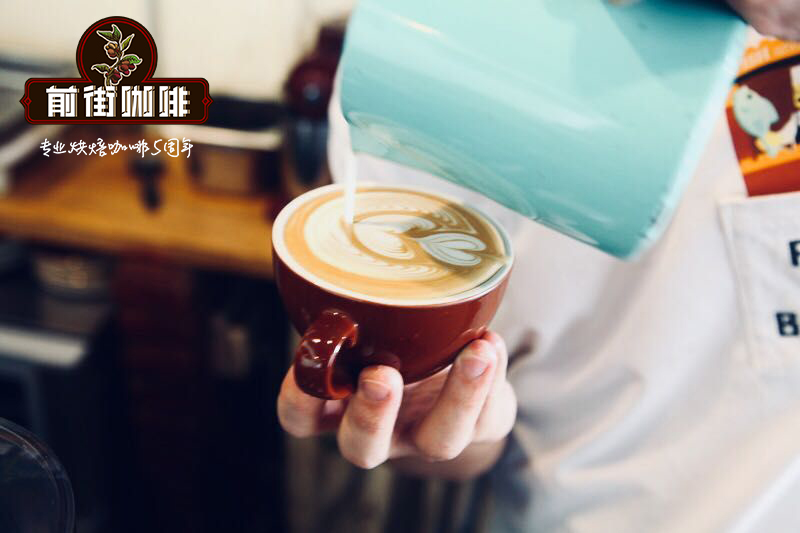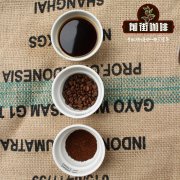The story of the cultivation of Sumatran coffee beans? What are the coffee producing areas in Sumatra? How to make cooking and printing

Professional coffee knowledge exchange more coffee bean information please follow the coffee workshop (Wechat official account cafe_style)
The story of the cultivation of Sumatran coffee beans? What are the coffee producing areas in Sumatra? How to cook Indonesian coffee beans?
Sumatra runs northwest-southeast, intersects the equator in the middle, and consists of two areas: the Barisan Mountains Mountains in the west and the marshes in the east. The southeast of Sumatra faces Java across the Sunda Strait, the north faces the Malay Peninsula across the Strait of Malacca, the east borders Borneo through the Strait of Karimata, and the west borders the Indian Ocean.
Indonesia produces coffee beans mainly in Java, Sumatra, Sulawesi and other three islands, all of which belong to volcanic topography. It is generally believed that Indonesian coffee beans have a strong aroma and low acidity, with a slight taste of traditional Chinese medicine and soil. Mandheling, produced in the mountains of Sumatra, is world-famous and rich in texture. Robusta beans from Java have a unique smell and are often used as a recipe for espresso because they are rich in oil. The coffee produced by Sulawesi is rated as having a special herbal flavor, deep and clean. In particular, there is a special animal called the civet in the mountains of Indonesia (it has also appeared in Taiwan, and it is currently listed as one of the representative animals of Yangmingshan). Because it makes Indonesia produce a kind of coffee that is almost the most expensive in the world-civet coffee. This kind of cat likes to eat coffee berries, and hard coffee beans are eventually excreted because they are indigestible. During the period of passing through the digestive tract, coffee beans are fermented to produce a unique and complex flavor, which makes many gluttons like this kind of coffee with special aroma. But because the output is very small, so the price is very high, in the hundreds of dollars per pound.
Sumatra is the largest island in Indonesia, located above the equator, with a tropical rain forest climate, high temperature, humidity and abundant rainfall. Small coffee farmers usually grow in primitive mountains, and their water resources are very precious, so a unique "wet peeling" sectional drying method (Giling Basah, Wet hulling) has been developed here, which adds a different flavor to Sumatra coffee from other regions. Of the coffee beans produced in Indonesia, 25 per cent are Arabica and the remaining 75 per cent are Robusta, while fine Arabica coffee from northern Sumatra is sold on the market as Lintong and Mandheling.
The coffee grown in the environmental soil of Sumatra is rich in woody texture and mellow taste, introverted flavor and lively and moderate acidity, as well as unique flavors such as herbal medicine, cedar, cocoa, fermented fruit and so on. Among them, Mantenin is the most classic coffee bean among the coffee beans produced in Indonesia, accounting for only 25% of the Arabica coffee species. It has an excellent classic taste, strong taste, mellow and lively movement, but it is not astringent but not sour, and its mellowness and bitterness can be fully revealed. When tasting Mantenin, it can be lubricated on the tip of the tongue, with a hint of herbaceous aromas, sweet cocoa and fruity aromas, with a long finish. Generally speaking, fans of Manning drink as a single drink, but Manning is also an indispensable variety of mixed coffee.
In the 17th century, the Dutch introduced Arabica saplings to Java for the first time and gradually expanded to Sumatra and other Indonesian islands. In 1877, a large-scale rust disease hit the Indonesian islands, almost destroying Arabica trees planted at low elevations, and many farmers had to give up Arabica coffee trees that had been operated for many years. Robusta coffee trees with strong disease resistance were introduced from Africa, and only a few Arabica trees were still planted at high elevations, while these remaining Arabica species It is the ancestor of Manning and Lindong Coffee, which are famous for their unique flavor.
Volcanic ash soil: the Bali Mountains are continuous Cenozoic mountains on the Qinghai-Tibet Plateau, running through the island of Sumatra. Coal and gold deposits have been discovered in this area. The minerals from the volcano enrich the soil. The mountains are beautiful and charming, such as the area around Lake Lake Toba.
Planting altitude: Sumatra Mante can be planted on an average of 1200m above sea level on a plateau of 1500m above sea level, with abundant rainfall and volcanic soil that contribute to coffee cultivation to produce high-quality Mantenin coffee beans.
The selected mantenin, which comes from the mountains around Lake Tawa in Aceh, Indonesia, and the Toba Lake District in Indonesia's Jiangsu Province, has large granules and hard beans, and is prone to defects in the process of planting. The defective beans are strictly picked out three times by man. the flavor is cleaner and tasteless. The palate is clean, sour and soft, slightly muggy, thick and thick, with charming creamy aromas and a hint of bitterness, with a full finish.
Flavor description: with obvious cream and chocolate aroma, a little black sugar, caramel flavor, rich and mellow taste, long tail, dry aroma with obvious smoked wood, herbal aroma, walnut with rich oil nutty aroma, dark chocolate aroma. Taste mellow and full, warm and dense, Huigan is excellent, with a long dark chocolate finish.
Qianjie recommended cooking:
Filter cup: KONO filter cup
Water temperature: 88 degrees
Degree of grinding: small Fuji degree of grinding 4
Cooking method: the ratio of water to flour is 1:14, 17g powder, 25g water for the first time, steaming for 30s, and 238g water for the second time. The extraction time is about 2:30 seconds.
Analysis: there are not many ribs at the bottom of the Kono cup, and the filter paper clings to the filter cup to achieve the purpose of limiting air flow, which can make water and coffee powder have longer contact soaking time in the filter cup and ensure the extraction time and extraction rate of rough grinding. In this way, the coffee powder can be fully extracted, enhance the mellow taste and make the taste more concentrated.
Flavor: well balanced, clean, thick and solid on the palate, with a long dark chocolate finish.
Important Notice :
前街咖啡 FrontStreet Coffee has moved to new addredd:
FrontStreet Coffee Address: 315,Donghua East Road,GuangZhou
Tel:020 38364473
- Prev

Which is better, Hawaiian Kona coffee, Jamaican Blue Mountain coffee or Cuban Crystal Mountain coffee?
Professional coffee knowledge exchange more coffee bean information please follow the coffee workshop (Wechat official account cafe_style) first of all, many people will ask: why there is no Kopi Luwak? In fact, Kopi Luwak is not a kind of coffee, it is only a kind of coffee product produced by special processing of coffee. All right, let's introduce our protagonists today: Jamaica Blue Mountain Coffee and Cuban Crystal Mountain Coffee.
- Next

[Mantenin, Lake Toba, Indonesia] what is the flavor and taste of Sumatra coffee beans? How to flush Sue with your hand
Professional coffee knowledge exchange more coffee bean information please follow the coffee workshop (Wechat official account cafe_style) [Toba Lake Mantenin, Indonesia] what is the flavor and taste of Sumatra coffee beans? How to make Sumatra manning coffee by hand? Sumatra runs from northwest to southeast, intersects the equator in the middle, and consists of two regions: the western Bari Mountains.
Related
- Detailed explanation of Jadeite planting Land in Panamanian Jadeite Manor introduction to the grading system of Jadeite competitive bidding, Red bid, Green bid and Rose Summer
- Story of Coffee planting in Brenka region of Costa Rica Stonehenge Manor anaerobic heavy honey treatment of flavor mouth
- What's on the barrel of Blue Mountain Coffee beans?
- Can American coffee also pull flowers? How to use hot American style to pull out a good-looking pattern?
- Can you make a cold extract with coffee beans? What is the right proportion for cold-extracted coffee formula?
- Indonesian PWN Gold Mandrine Coffee Origin Features Flavor How to Chong? Mandolin coffee is American.
- A brief introduction to the flavor characteristics of Brazilian yellow bourbon coffee beans
- What is the effect of different water quality on the flavor of cold-extracted coffee? What kind of water is best for brewing coffee?
- Why do you think of Rose Summer whenever you mention Panamanian coffee?
- Introduction to the characteristics of authentic blue mountain coffee bean producing areas? What is the CIB Coffee Authority in Jamaica?

